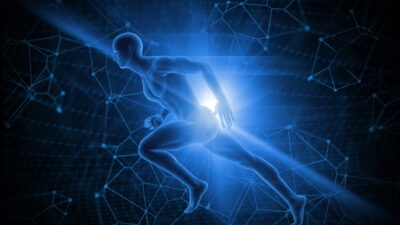What is Parkinson’s disease?

Parkinson’s Disease is the fastest-growing neurological condition in the world. It is a chronic and progressive neurological disorder that affects around 145,000 people in the UK. Although the cause of Parkinson’s disease is still unknown, there are a number of treatments and therapies available that can help patients manage their symptoms and improve their quality of life. In this blog post, we will provide an overview of what Parkinson’s disease is, what causes it, and what treatments are available.
What is Parkinson’s Disease?
Parkinson’s disease is a degenerative disorder of the central nervous system that primarily affects the motor system. It usually develops slowly, with early symptoms often appearing subtly. For this reason, it can be hard to diagnose in the early stages. Early symptoms may include things like a slight tremor in one hand, slow movement or slight difficulty with coordination. As the disease progresses, symptoms generally become more severe. They may include issues like a complete loss of facial expression, rigidity in the limbs and trunk, balance problems and slurred speech.
What are the symptoms of Parkinson’s Disease?
As we mentioned above, symptoms of Parkinson’s disease can be hard to spot in the early stages because they tend to develop slowly and subtly. However, there are some common early signs that you can look out for:
Tremor
This is usually most noticeable when you’re at rest. Symptoms often begin on one side of the body, usually in one hand but over time it may spread to both hands as well as your arms, legs, jaw and face.
Rigidity
This refers to stiffness in your muscles which can make movement difficult. When you try to move your arms or legs, they may not swing as freely as usual.
Bradykinesia
This means “slowness of movement.” People with bradykinesia may have trouble starting to move from a resting position. Once they get going, their movements are often small and shuffle-like rather than smooth and graceful.
Postural instability:
This symptom usually appears later on in the course of the disease. It can cause problems with balance and make it difficult to walk or stand.
People with Parkinson’s disease often experience symptoms that go beyond tremors and muscle stiffness. In fact, many people with the condition suffer from a range of non-motor symptoms that can significantly impact their quality of life. These symptoms can include:
- Depression
- Anxiety
- Sleep problems
- Cognitive impairment
- Hallucinations or delusions
- Loss of sense of smell
- Constipation
- Orthostatic hypotension (low blood pressure when standing up)
As the disease progresses and more nerve cells are lost, dopamine levels decrease, leading to a widening array of symptoms. It’s important to keep in mind that Parkinson’s disease symptoms can vary widely from person to person in terms of both severity and order of appearance.
How does a person get Parkinson’s Disease?
Loss of nerve cells
Parkinson’s disease is a condition that affects nerve cells in the brain. The substantia nigra is a specific area of the brain that contains nerve cells or neurons that produce dopamine. Dopamine is a neurotransmitter (a chemical messenger that allows neurons to communicate) that helps to send signals between nerve cells. People with Parkinson’s disease have a loss of nerve cells in the substantia nigra. This loss of nerve cells results in a decrease in levels of dopamine. A decrease in dopamine causes problems with movement because the brain can’t send signals between nerve cells as well. As a result, people with Parkinson’s disease often experience tremors, stiffness and difficulty walking.
A build-up of Lewy bodies
A hallmark of Parkinson’s disease is Lewy bodies. They are abnormal clumps of alpha-synuclein proteins that build up in brain cells. In Parkinson’s disease, Lewy bodies are most commonly found in the substantia nigra, a region of the brain responsible for movement. The presence of Lewy bodies in the substantia nigra is thought to contribute to the loss of dopamine-producing cells, which leads to the characteristic symptoms of Parkinson’s disease. In some cases, Lewy bodies may also be found in other parts of the brain, such as the cortex, which is responsible for thinking and cognition. The presence of Lewy bodies in the cortex may explain why some people with Parkinson’s disease also experience memory problems and changes in mood and behaviour. Although Lewy bodies are a hallmark of Parkinson’s disease, their exact role in the condition is still not fully understood. However, they are thought to play a significant role in the degeneration of neurons and the development of symptoms.
Exactly what causes the loss of nerve cells is unclear. However, researchers believe that it is likely caused by a combination of environmental and genetic factors. There are a number of genes that have been linked to an increased risk of developing Parkinson’s disease. People who have a family member with Parkinson’s are also more likely to develop the condition themselves. Environmental factors that may play a role in the development of Parkinson’s include exposure to certain toxins or head injuries.
There is no definitive cause of Parkinson’s disease, but there are several risk factors that have been identified. Age is the most significant risk factor; Parkinson’s most commonly affects people over the age of 60. Other risk factors include family history and exposure to certain toxins such as pesticides.
How is Parkinson’s Disease diagnosed?
The diagnosis of Parkinson’s disease can be a difficult and frustrating process. There are no blood tests or imaging studies that can diagnose the condition. In some cases, additional tests such as brain imaging or blood tests may be conducted in order to rule out other conditions with similar symptoms.
Instead, the diagnosis is based on a combination of medical history, symptoms and physical examination. In some cases, special nerve testing may be performed. The diagnosis of Parkinson’s disease is typically made by a movement disorders specialist, a neurologist with expertise in the condition. However, primary care physicians also play an important role in diagnosing and managing the condition. If you suspect that you or a loved one may have Parkinson’s disease, it is important to seek medical attention as soon as possible. Early diagnosis and treatment can improve the quality of life and help to slow the progression of the disease.
What are the treatment options for Parkinson’s Disease?
Treatments are available to help reduce the main symptoms. The most common drug treatment for Parkinson’s disease is levodopa, which helps to improve muscle function but has side effects. Other medications that may be used to treat Parkinson’s disease include dopamine agonists, monoamine oxidase inhibitors, and catechol-o-methyltransferase inhibitors.
Levodopa
Levodopa (also known as L-dopa) is a medication that is used to treat Parkinson’s disease. It works by increasing levels of dopamine, a chemical messenger in the brain that is responsible for controlling movement. Levodopa is usually taken three times a day, and it can be taken with or without food. Long-term use of levodopa is also linked to problems such as uncontrollable, jerky muscle movements (dyskinesia). If you experience side effects, please let your doctor know. Levodopa patients should not stop taking their medication without first talking to their doctor.
Dopamine agonists
Dopamine agonists can often be given less frequently than levodopa. This type of medication can help to improve muscle control and reduce tremors. Dopamine agonists work by mimicking the effects of dopamine, a chemical messenger in the brain that helps to regulate movement. There are several different types of dopamine agonists available. They can be taken by mouth or are also available as a skin patch. The most common side effects of dopamine agonists include nausea, dizziness and fatigue. When choosing a dopamine agonist, it is important to work with a doctor to find the right medication and dose for you.
Monoamine oxidase inhibitors
Monoamine oxidase inhibitors (MAOIs) are a type of medication used to treat certain mental health conditions. They work by preventing the breakdown of certain chemicals in the brain, which can help to improve mood and ease symptoms of depression. MAOIs can also be effective in treating other conditions, such as Parkinson’s disease. MAOIs can help to relieve some of the symptoms of Parkinson’s disease by increasing the levels of certain chemicals in the brain. This can help to improve mobility and reduce tremors. MAOIs are usually only prescribed when other treatments, such as medication for Parkinson’s disease, have not been effective. They can cause side effects, such as headaches and dizziness, so it is important to talk to your doctor about all the risks and benefits before starting treatment with an MAOI.
Catechol-o-methyltransferase inhibitors
One type of medication that is sometimes used to treat Parkinson’s disease in later stages is a catechol-o-methyltransferase (COMT) inhibitor. COMT inhibitors work by blocking the enzyme that breaks down dopamine. By increasing the level of dopamine in the brain, COMT inhibitors can help to ease the symptoms of Parkinson’s disease. Although COMT inhibitors are not effective for everyone with Parkinson’s disease, they can be a helpful treatment for some people.
Deep brain stimulation
Deep brain stimulation (DBS) is a surgical procedure that involves the implantation of a device called a brain pacemaker. The brain pacemaker delivers electrical impulses to specific areas in the brain. DBS has been found to be effective in reducing the symptoms of Parkinson’s disease, such as tremors, rigidity and slowness of movement. In some cases, DBS has also been found to improve the quality of life for patients with Parkinson’s disease.
The most common side effects of DBS include infection at the site of surgery, bleeding or bruising and headaches. DBS is a relatively new procedure. More research is needed to determine its long-term effectiveness. DBS offers hope for many people with Parkinson’s disease who are seeking treatment options that can improve their quality of life.
Physical and occupational therapy
Physical therapy and occupational therapy are important tools in the treatment of Parkinson’s disease. Physical therapy can help to improve a person’s strength, flexibility and balance. This can help to make everyday activities, such as walking and dressing easier. Occupational therapy can also help to improve a person’s ability to perform daily tasks. This may involve teaching new techniques for activities such as cooking or grooming. In addition, occupational therapists can provide devices, such as adapted utensils, that can make these tasks easier. By working with a physical therapist or occupational therapist, people with Parkinson’s disease can improve their quality of life and maintain their independence.
Keeping well
If you or a loved one has been diagnosed with Parkinson’s disease, it can be a confusing and overwhelming time. Here are a few tips to help manage the disease:
- Exercise regularly. Exercise can help to improve motor skills and reduce symptoms of depression. It is important to talk to your doctor before starting any new exercise routine
- Eat a healthy balanced diet. Nutrition plays an important role in managing Parkinson’s disease. Eating plenty of fruits, vegetables and whole grains can help to improve overall health and well-being
- Build a support system. Family and friends can be great sources of support during difficult times. Many support groups are also available for people with Parkinson’s disease and their caregivers. Talking to others who understand what you are going through can be very helpful
Seek help
The field of Parkinson’s research is ongoing and ever-evolving as we learn more about this disease. While there is no cure for Parkinson’s there are treatments available that can help manage the symptoms and improve quality of life. In addition, there are a number of support groups, helplines and resources available for people living with Parkinson’s and their loved ones. If you think you or someone you love may have Parkinson’s disease, it is important to talk to your healthcare provider as soon as possible for medical advice to determine the best course of action.
Sources
- Parkinsons Disease – NHS
- Parkinsons Disease – NIH
- Parkinson Disease – Michael J Fox
- World Parkinson’s Day – Parkinsons
- Parkinsons Foundation – Parkinson
Medical Disclaimer
NowPatient has taken all reasonable steps to ensure that all material is factually accurate, complete, and current. However, the knowledge and experience of a qualified healthcare professional should always be sought after instead of using the information in this page. Before taking any drug, you should always speak to your doctor or another qualified healthcare provider.
The information provided here about medications is subject to change and is not meant to include all uses, precautions, warnings, directions, drug interactions, allergic reactions, or negative effects. The absence of warnings or other information for a particular medication does not imply that the medication or medication combination is appropriate for all patients or for all possible purposes.
Related Articles
What is NowPatient
Telehealth and Online Pharmacy
NowPatient is a licensed online pharmacy and doctor service that is available around the world. Our service is FREE and packed with valuable features that can benefit your health such as medication reminders, educational blogs, medically approved symptoms checker, UK NHS online pharmacy, private treatment plans, Rx Advantage card, health conditions information, affordable medications options, genetic testing, home test kits, health risks, pollen meter, air quality monitor, weight loss plans, drug savings programs and lots more!

WHY WE BUILT NOWPATIENT
To improve the lives of everyone by making high-quality care accessible and convenient
We are here to improve lives. Our service gives you access to smart features and resources that can help empower you to take control of your health and improve your health outcomes. All this, in one place, for FREE. We strive to bring a fresh perspective to managing health. NowPatient can be accessed by downloading the App or using your web browser.
Download our app today

Can I trust NowPatient
Meet our medical team
We are a passionate group of clinicians and medical writers covering a broad range of specialities with experience operating in health systems in the United Kingdom & United States. Providing excellent care and advice is at the heart of everything we do. You can read more about our medical team by visiting the medical team page or learn more about how we curate content by visiting our editorial process


